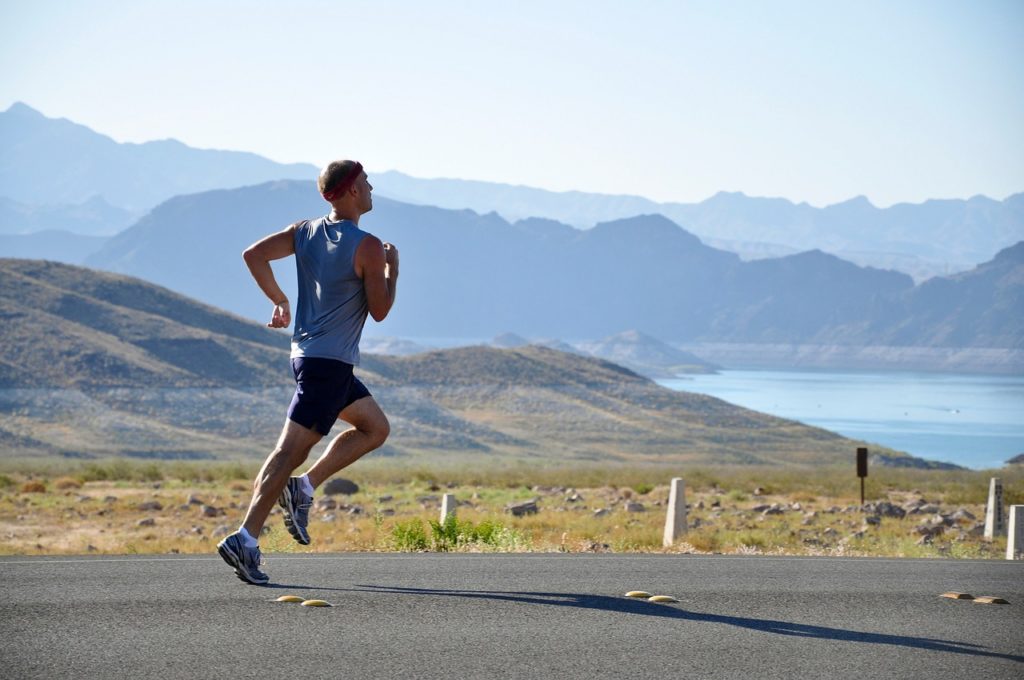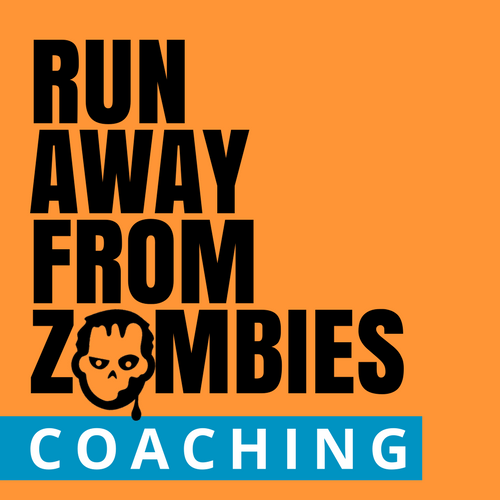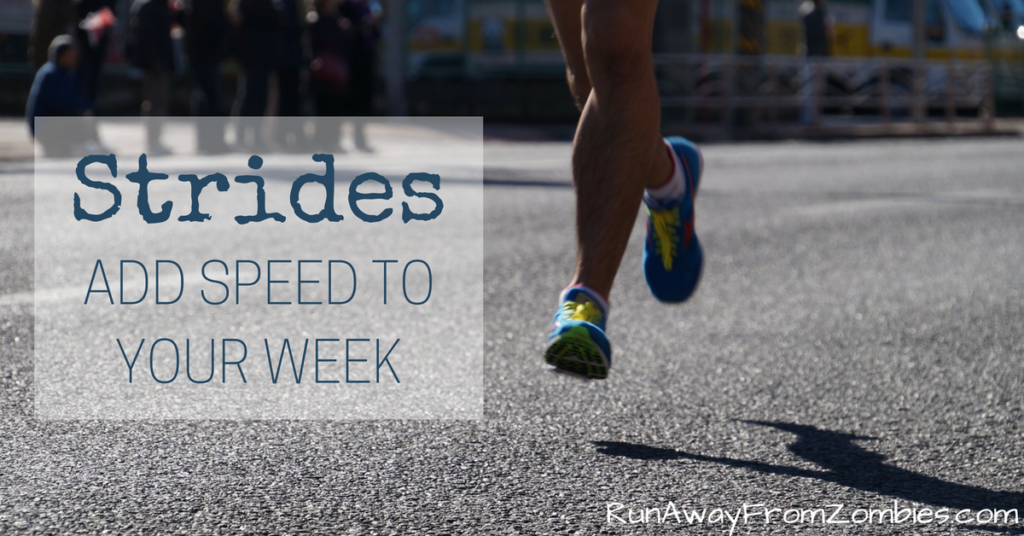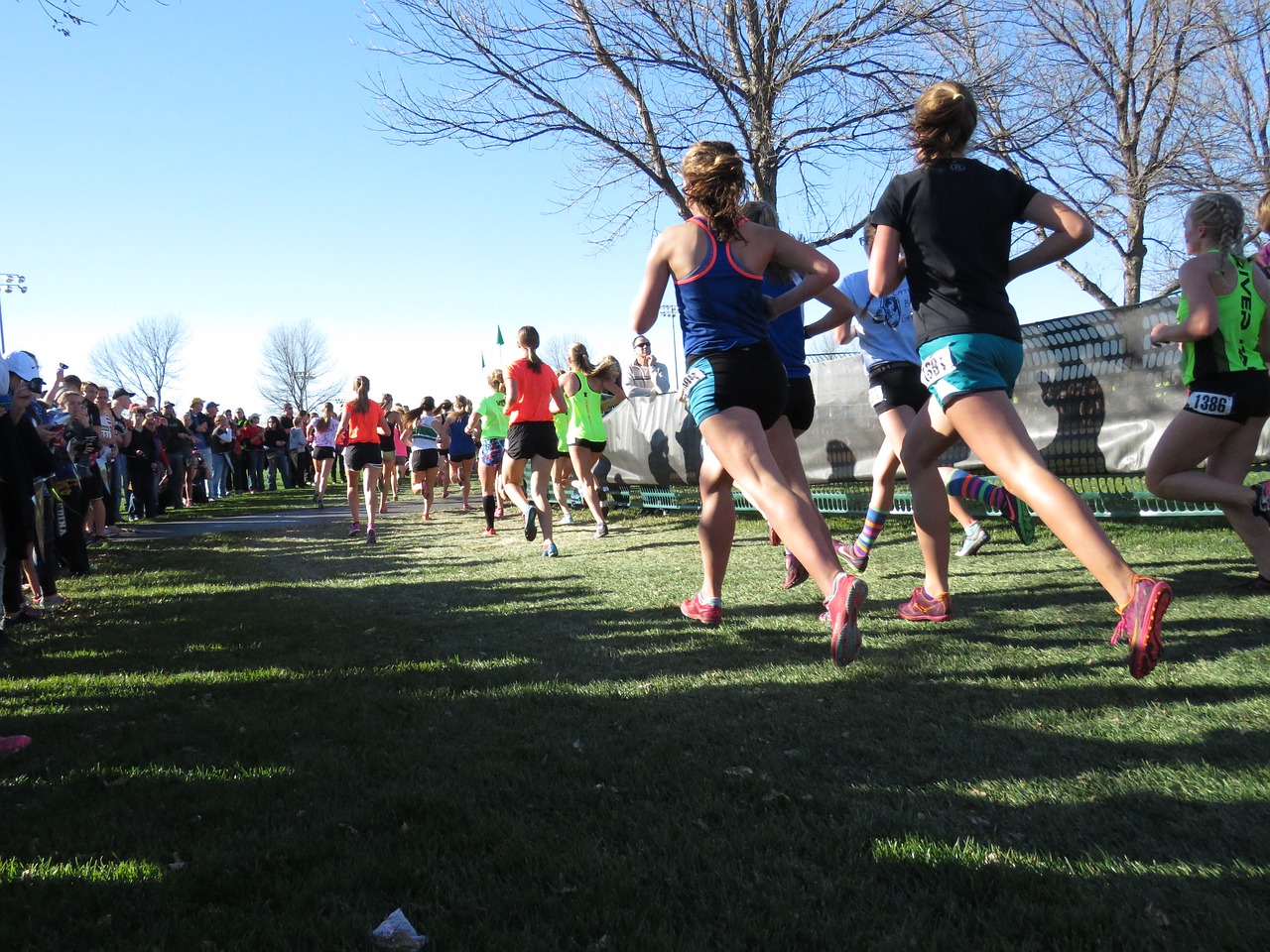So now you’re running at conversation pace, but how do you add in faster running? Strides!
Once you’re consistently running, add in strides once or twice a week. Strides are short bursts (about 100 meters) of fast running. They are a fun and easy way to teach your body to run fast on command.
Strides: The Gentle Way to Add Speed
How to:
- Start at conversation pace
- Gracefully increase speed until you are running at about 85-95% max speed (slower if you’re just starting strides)
- Keep that top speed for a few seconds
- Gracefully decrease speed until conversation pace the last few steps
- Stand, walk, or lightly jog until completely recovered
 The above is “1 stride” which takes about 80-150 meters. The exact distance does not matter, only the progression. Stay controlled – don’t let body parts flail. Stay relaxed – try smiling.
The above is “1 stride” which takes about 80-150 meters. The exact distance does not matter, only the progression. Stay controlled – don’t let body parts flail. Stay relaxed – try smiling.
Strides are fast running, but they aren’t hard running. Don’t tense up when you do strides. Don’t grit your teeth or clench your jaw. Run light and smoothly.
Let your heart rate slow and catch your breath in between. There is no benefit to starting another stride before you are completely recovered.
How to Add Strides to Your Routine
- Add strides to 1-3 days of your week
- Start with 3-4 strides and work your way up to 6-8 strides
- Do strides at the end of your run to practice running fast at the end of a workout
- If already doing speedwork, add to your warm-up to get your legs spinning
Benefits of Strides
- Gently introduces speed to your week
- Allows you to practice smooth, relaxed cadence
- Promotes good running form
- Teaches you control at high speeds
- Stretches stale legs
- Makes you feel good, even after an average or lousy run

As a long distance runner, my legs start to feel flat after all of the miles. A few strides can leave me feeling long and lean. And a few more can make me feel not so far away from a decent 5K race.
Strides are versatile – benefiting any running routine. Besides adding them to your easy runs, they are a great warm-up for an intense speedwork session or as a tune-up before racing.
P.S. – If you are trying to include some barefoot running, strides on grass are a great time to do that.
Strides may seem like a small thing, but they can really make a difference in your running and racing. Not only are they good for you, but they’re also fun to do.






High costs are still a big barrier to prospective customers, said Alan Gibson, principal at Maine-based builder GO Logic, where a shell for an ultra-efficient, two-story, 1,400 square foot home with three bedrooms can cost around $600,000.
трип скан
Homeowners also need to factor in additional costs, like buying and developing a suitable plot of land, and in some cases, getting access to water, electricity and septic, Gibson added.
https://trip-scan.top
tripscan top
The way to bring down costs, Gibson believes, is more panelized, multi-family housing.
“It can be done so much more efficiently,” Gibson said, “and there’s a lot more repetition” for the developer, making the process faster and less expensive than custom multi-family builds.
Goodson, the homeowner in Maine, was able to save big money with his engineering background and penchant for DIY. He installed a rooftop solar system and electrical improvements himself, saving hundreds of thousands of dollars in the process. He wound up spending around $500,000 in all, which he estimates was $200,000 less than he otherwise would have.
“It’s a big number to swallow, I’m not making light of that at all, but it’s not that far out of what’s reasonable,” Goodson told CNN. It’s also not considering the long-term savings he will experience with no utility bills.
He was also able to take advantage of federal tax credits that reduced the cost of his rooftop solar, which saved him more than $10,000 on his panels. Those tax credits are now endangered with House Republicans’ tax bill.
“That was huge,” he said. “It’s fairly unfortunate they’re looking at doing away with it.”